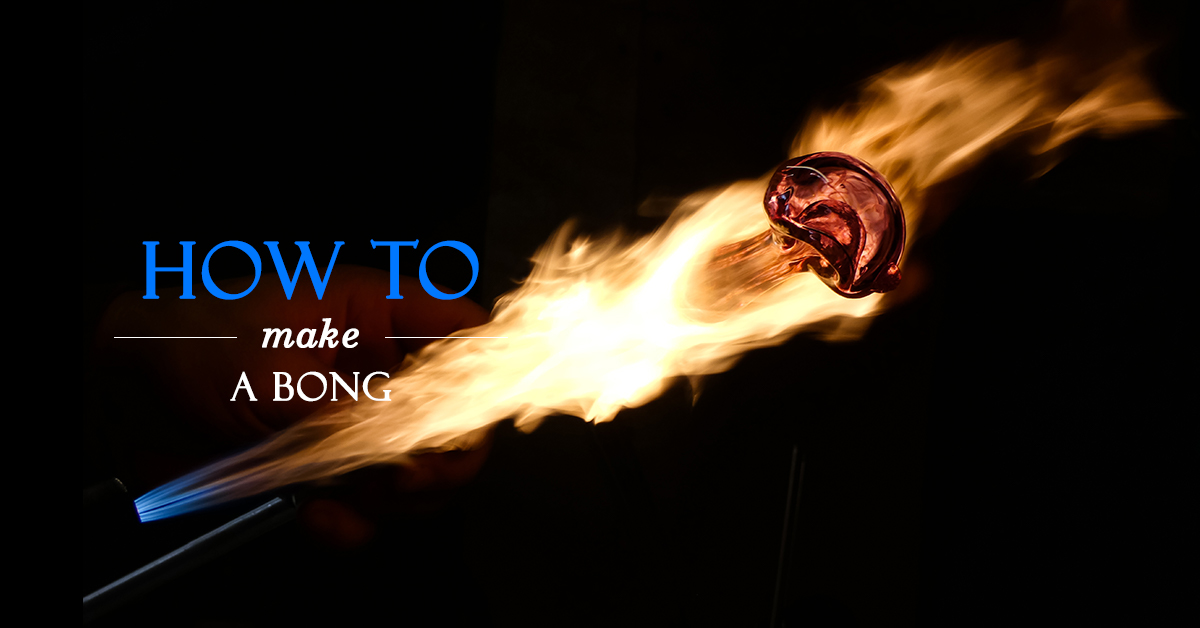Tutorial
How to Make a Bong? The Ultimate DIY Guide for Smokers
If you’re in a pinch and don’t have access to a traditional glass bong, don’t worry – you can make one yourself using simple materials found around the house. Learning how to make a bong is not only a creative solution but also a fun way to personalize your smoking experience. In this comprehensive guide, BONGSnPIPES will walk you through multiple methods to craft your own homemade bong, safely and effectively.

Why Make a Bong Yourself?
There are many reasons someone might choose to make a bong at home:
- Cost-Effective: You don’t have to spend money on expensive gear.
- Emergency Use: Forgot or broke your bong? DIY options come to the rescue.
- Creative Fun: It’s a hands-on project that lets you get crafty.
Eco-Friendly: Repurpose household items instead of throwing them away.
No matter your reason, it’s essential to build your bong with safety and functionality in mind.
What You’ll Need to Make a Homemade Bong?
Here are some common household items that can be used to make a bong:
- Plastic bottle (16 oz. or 2-liter)
- Aluminum foil
- Pen tube or straw (non-toxic plastic or metal)
- Water
- Scissors or sharp knife
- Tape or putty (optional for sealing)
Note: Avoid using materials that release toxic fumes when heated, like PVC, rubber, or certain plastics.
How to Make a Bong?
To make a homemade bong, start with a plastic bottle as the base. Create a small hole on the side for a downstem – this can be a hollow pen or metal tube. Insert the downstem at an angle, and seal any gaps with tape or putty. Fill the bottle with enough water to cover the bottom of the downstem. Fashion a bowl from aluminum foil or use a metal socket, place it on the downstem, then inhale through the bottle’s mouthpiece while lighting the bowl. Always use safe, non-toxic materials when making DIY bongs.
Method 1: Plastic Bottle Bong (The Classic DIY Style)
This is the most popular and beginner-friendly way to make a bong.
Step 1: Prepare the Bottle
Use a clean, empty plastic bottle. A standard water bottle or soda bottle works well. Remove the cap – you won’t need it.
Step 2: Create the Downstem Hole
Use a knife or scissors to make a small hole slightly above the base of the bottle at a 45-degree angle. The hole should be just big enough to fit your downstem.
Step 3: Insert the Downstem
Use a pen tube, metal straw, or glass pipe as the downstem. Angle it downward into the bottle so it reaches below the waterline once filled. Seal it with tape or gum if needed.
Step 4: Make the Bowl
Wrap aluminum foil into a small cup shape and place it at the top of the downstem. Poke tiny holes in the foil to allow airflow.
Step 5: Add Water
Pour water into the bottle so the downstem is submerged by at least an inch. This cools and filters the smoke.
Step 6: Light and Inhale
Place your herb in the foil bowl. Cover the top opening with your mouth, light the bowl, and inhale gently through the mouthpiece.
Method 2: Fruit Bong (Natural and Fun)
Want a fun twist? Learn how to make a bong from fruit!
Popular Options:
- Apple
- Pineapple
- Watermelon
Steps (Apple Example):
- Remove the apple stem.
- Use a pen or stick to make a tunnel from the top to the middle.
- Create a second hole from the side to connect with the first tunnel (this is your carb).
- Hollow out a small bowl at the top.
- Insert a small screen or foil to hold the herb.
- Inhale from the side hole and light the top bowl.
Fruit bongs are disposable, natural, and add a fruity flavor to your smoke.
Method 3: Gravity Bong (For Powerful Hits)
Gravity bongs use air pressure to fill a chamber with dense smoke.
Materials:
- Large bottle (or bucket)
- Smaller bottle with bottom cut off
- Bowl piece or foil
How to Build:
- Fill the bucket with water.
- Place the smaller bottle inside, top up.
- Fit a bowl or foil over the mouthpiece.
- Light the bowl while slowly lifting the bottle.
- Let the chamber fill with smoke.
- Remove the bowl and inhale as you push the bottle down.
This method delivers intense, concentrated hits – ideal for experienced users.
Method 4: Glass Jar or Mason Jar Bong
If you have a mason jar lying around, you can convert it into a sturdy bong.
Steps:
- Drill or poke a hole in the jar lid for your downstem.
- Insert the downstem and secure it tightly.
- Use foil or a metal bowl to hold your herb.
- Add water to the jar and use the hole in the lid as a mouthpiece.
This method is durable and can even become a semi-permanent smoking device.
Safety Tips for Homemade Bongs
- Avoid Toxic Materials: Never use plastic that melts or produces fumes.
- Clean Before Use: Always wash bottles, jars, or fruits thoroughly.
- Use Heat-Resistant Parts: Glass and metal are safer than plastic.
- Don’t Reuse Often: Many homemade bongs are meant for temporary use only.
FAQs About Making a Bong
Is it safe to make a bong from plastic?
Yes, but only if the plastic doesn’t come in direct contact with the flame or heat. Always use aluminum foil or a proper bowl to separate the heat source.
Can I reuse a DIY bong?
Yes, especially for glass or jar-based ones. Plastic and fruit bongs are better for one-time use.
What’s the best DIY bong for big hits?
A gravity bong delivers the strongest hits thanks to the vacuum effect.
Learning how to make a bong gives you flexibility and freedom when you’re short on supplies. From plastic bottles to pineapples, the options are only limited by your imagination. As long as you follow safety guidelines and use clean, non-toxic materials, you can enjoy a smooth smoking session with your homemade creation.
Now grab your materials, get crafty, and enjoy your next session with a DIY bong built by you!
